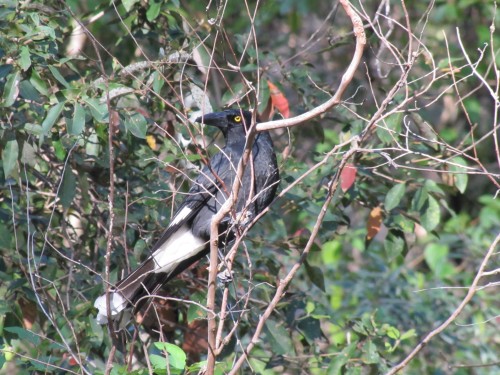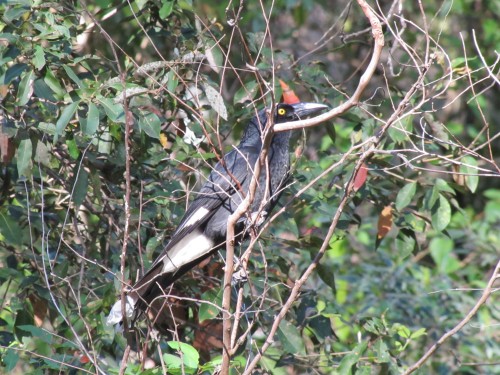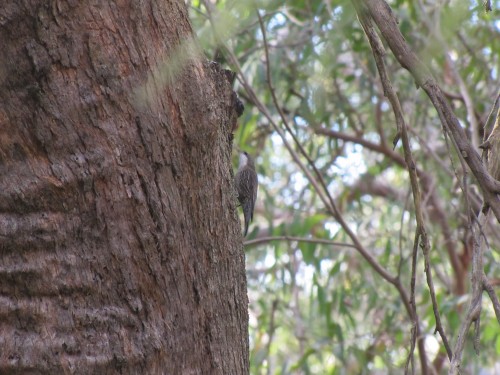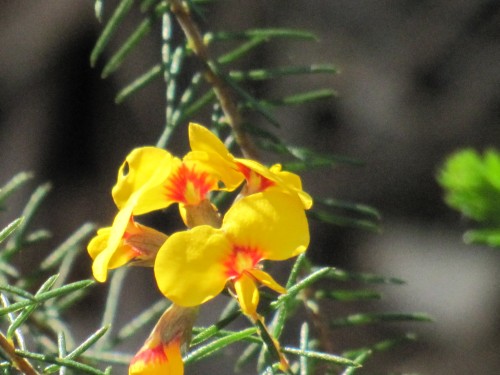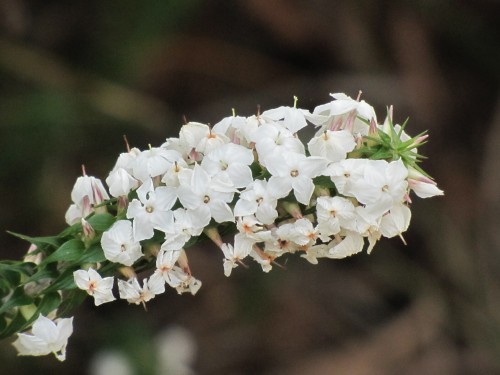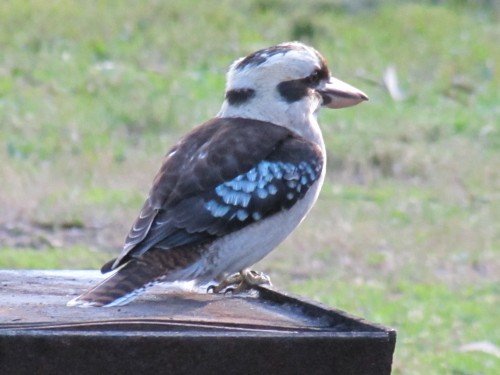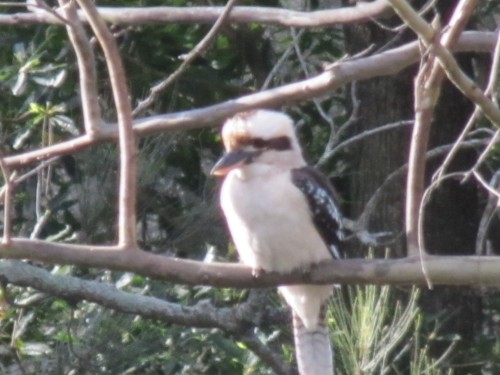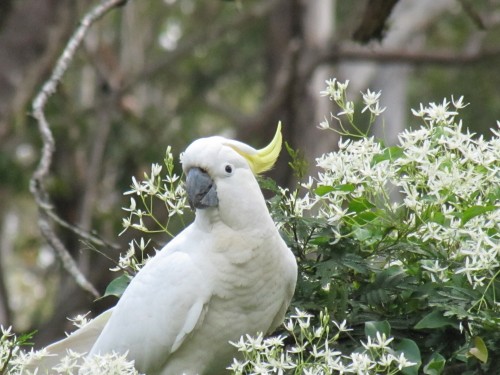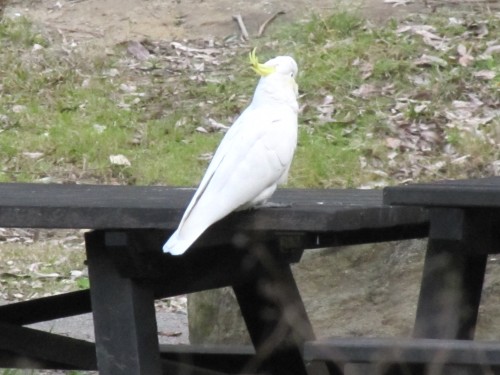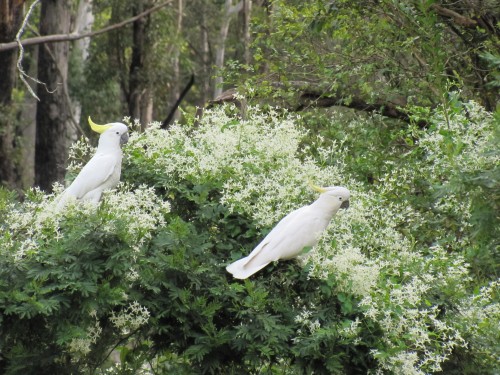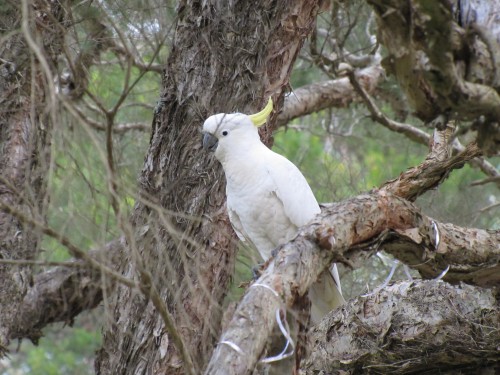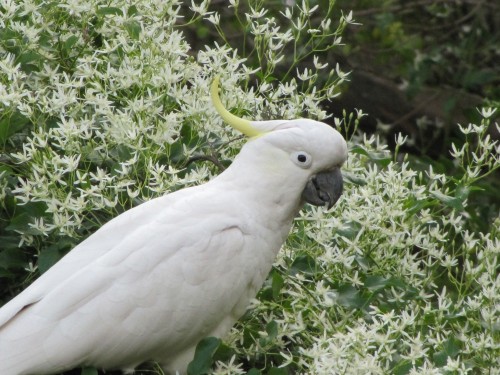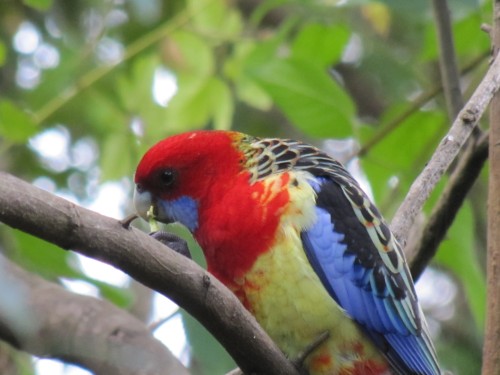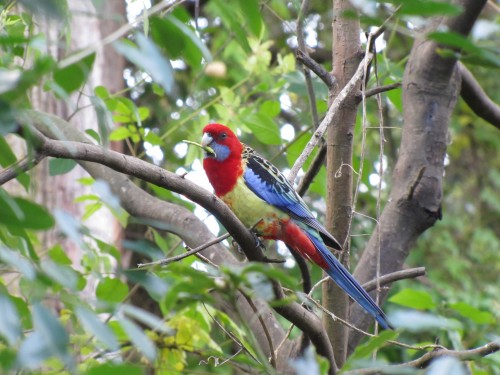Pied Currawong and that glaring eye
While we were having afternoon tea in the Lane Cove National Park in Sydney a Pied Currawong flew into a bush nearby. It stayed for a few moments before flying off again. When ever I see this species – and its cousin the Grey Currawong – I am taken by that glaring eye. It almost looks malevolent in intent.
Now it is very unscientific of me to assign human characteristics to a bird, but I can get away with it here because this doesn’t pretend to be a scientific site by any definition one cares to dredge up. I just want to share with the world my bird sightings, illustrating them where possible with photos I have taken.
Having said that, I must say that describing the currawong as being malevolent from a human point of view is not all that far from the truth. Granted – the currawong is not intentionally being nasty; it just seems that way from the viewpoint of compassionate humans – and a whole host of small birds and animals.
Currawongs eat a wide range of creatures, including smaller birds, bird eggs and nestlings, small reptiles, spiders, insects and will even steal take food at picnics, fruit from trees and garbage. All that may seem nasty and cruel to compassionate, animal-loving humans, but for the currawong it spells survival. The nestling of a honeyeater may mean the survival of the nestling of the currawong. It’s a huge, wild, nasty world out there.
And I still think its eye is rather evil.
White-throated Treecreeper
On my recent visit to the Lane Cove National Park in Sydney a spent a half hour or so slowly walking along one of the roads through the park, trying to find and photograph some of the birds present in the park. It was a rather frustrating time and although I managed to add a few birds to my list, I wasn’t very successful at getting many photos.
The above shot of a White-throated treecreeper – a poor shot at that – was the only one I can use here. So instead of returning to the car without any photos, I turned my attention to some of the flowers.
One hot bird?
Near the end of our recent visit to the Lane Cove National Park in Sydney I saw this Laughing Kookaburra, first on a branch of a nearby tree (see below), and then on a nearby barbecue plate.
Fortunately nobody had been to that barbecue to cook their lunch that day, otherwise we would have had one very hot bird!
On a more serious note: once several decades when cooking a barbecue lunch for my family in Western Australia a kookaburra swooped out of a nearby tree and grabbed a sausage from the hot plate. I was not happy at the time, but in recent years I delight in telling this little story.
By the way, Laughing Kookaburras are not native to WA; they were introduced in the 1890s and have spread over much of south west Western Australia. On the other hand, Blue-winged Kookaburras can be found in the northern parts of WA.
Further reading:
- Laughing Kookaburra comes to lunch – an account of another kookaburra seeking human food – also in the Lane Cove National Park a few years ago.
Sulphur Crested Cockatoos up close
Over recent days I have been sharing some photos of some of the birds seen on a recent visit to Lane Cove National Park. Today it’s the turn of several Sulphur-crested Cockatoos.
One of the birds flew in and settled on our picnic table within minutes of us starting lunch (see photo below). When it didn’t get any handouts from us, it flew over to join another few birds feeding on a clematis bush in full flower.
I love taking photos of this species, one which is widespread across much of eastern Australia. On the other hand, I realise that not all people share my love of this species. In numbers they can be a pest species. They can easily cause havoc on trees, stripping the leaves off branches. People who own houses with plenty of timber in the structure have experienced the destructive nature of these birds.
Further reading:
The beautiful Eastern Rosella
Earlier this year my wife and I had a day visit to the Lane Cove National Park. We were visiting our family for a few weeks and on this occasion we were free from grandparent duties.
Lane Cove National Park near Chatswood north of the Sydney CBD and is only about 15 minutes drive from my son’s home, so visiting is quite convenient. We went on a weekday, so there were only a few people around. Lunch time walkers, runners and cyclists made up the majority of visitors to the park.
As we were about to eat our lunch I noticed an Eastern Rosella fly in to a nearby tree. I steadily walked to within camera range and managed several good photos. Every time I see this species I marvel at the wonderful combination of colours.
Eastern Rosellas are quite common in the eastern parts of Australia. They are also present in the south east of South Australia and were introduced to the Adelaide region. We occasionally see one in our garden at Murray Bridge. It keeps company with the local Mallee Ringneck parrots. I’m not sure if this is a cage escapee or a case of their range steadily expanding.
Whatever the reason, we always enjoy seeing “our” rosella.
